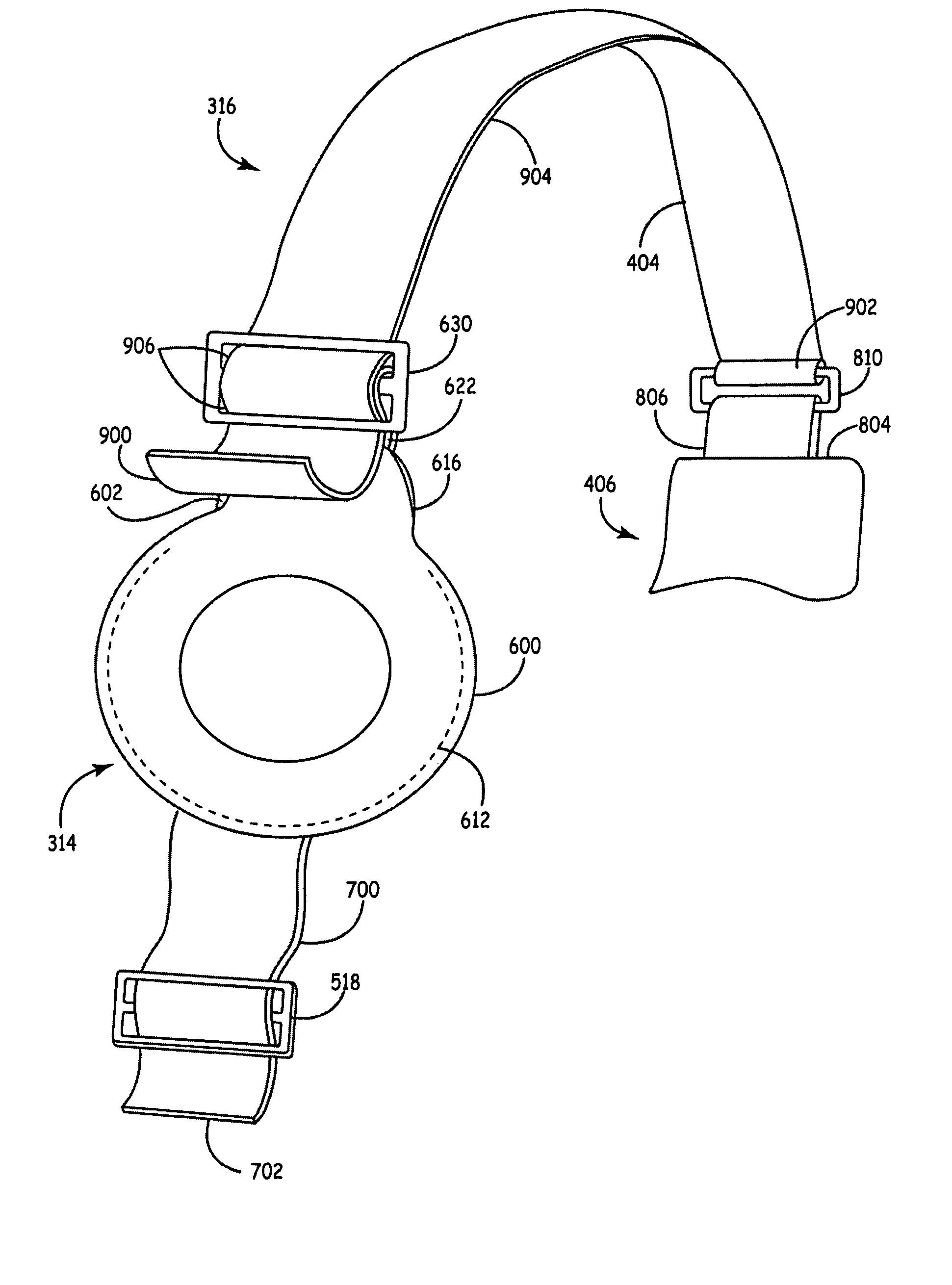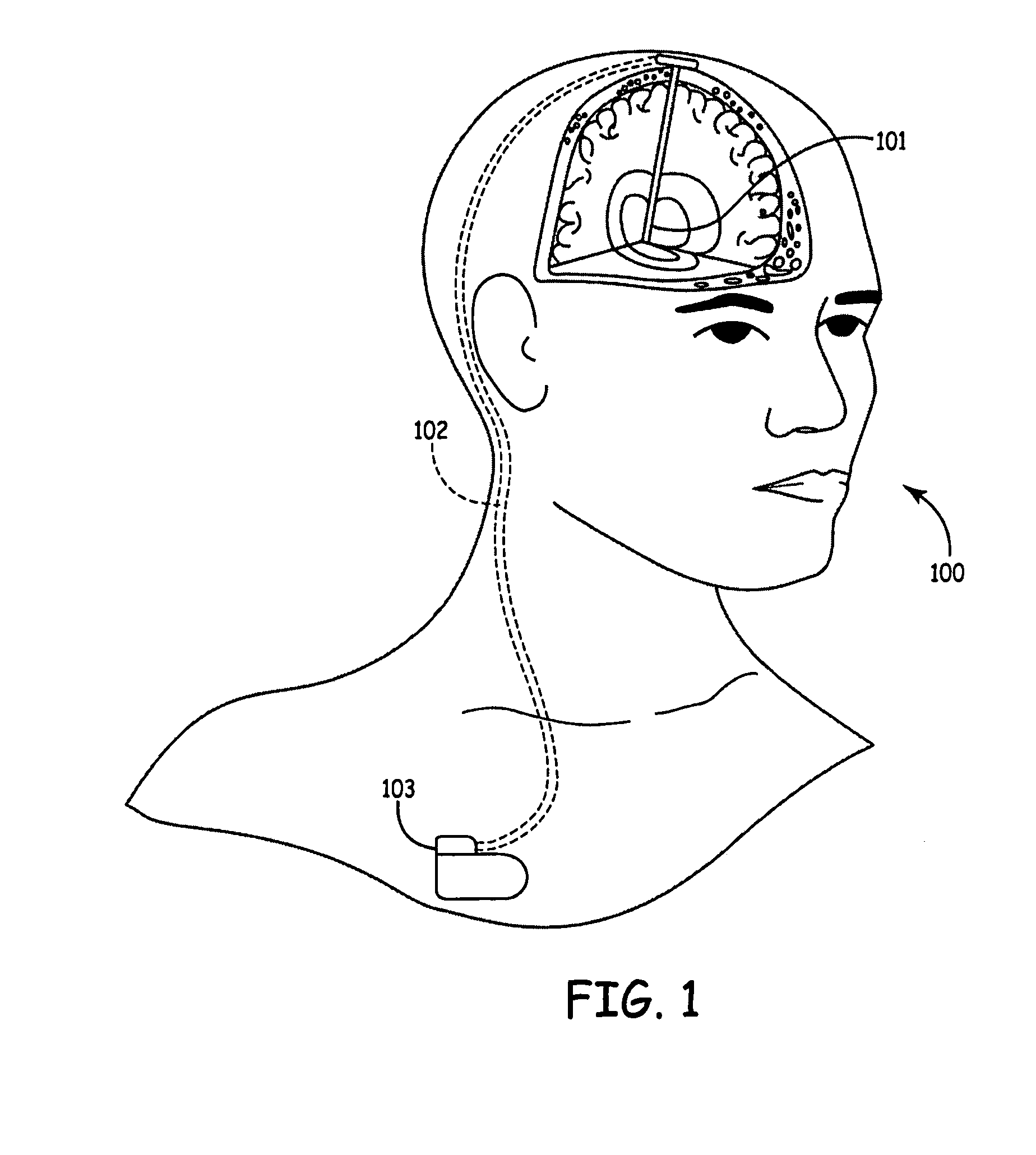Holster for charging pectorally-implanted medical devices
- Summary
- Abstract
- Description
- Claims
- Application Information
AI Technical Summary
Benefits of technology
Problems solved by technology
Method used
Image
Examples
Embodiment Construction
[0048]The current invention relates to a holster for charging pectorally-implanted Implantable Medical Devices (IMDs). The term “charge” refers to any type of charge including, but not limited to, an initial charge and a recharge. The pectoral region is preferably proximate the pectoral muscles and is more preferably within a region of the body below the clavicle, above the xiphoid process of the sternum, and between the sternum and the axilla, which is a cavity beneath the junction of the arm and the torso. An example of a suitable pectorally-implanted medical device for use with the present invention is disclosed in U.S. Patent Publication No. US 2005 / 0245996 A1, published Nov. 3, 2005, entitled “Spacers for Use with Transcutaneous Energy Transfer System”.
[0049]One embodiment of the holster includes a torso strap and shoulder strap. The torso strap includes first and second ends and an intermediate portion there between. The first and second ends of the torso strap are adapted to ...
PUM
 Login to View More
Login to View More Abstract
Description
Claims
Application Information
 Login to View More
Login to View More - R&D
- Intellectual Property
- Life Sciences
- Materials
- Tech Scout
- Unparalleled Data Quality
- Higher Quality Content
- 60% Fewer Hallucinations
Browse by: Latest US Patents, China's latest patents, Technical Efficacy Thesaurus, Application Domain, Technology Topic, Popular Technical Reports.
© 2025 PatSnap. All rights reserved.Legal|Privacy policy|Modern Slavery Act Transparency Statement|Sitemap|About US| Contact US: help@patsnap.com



